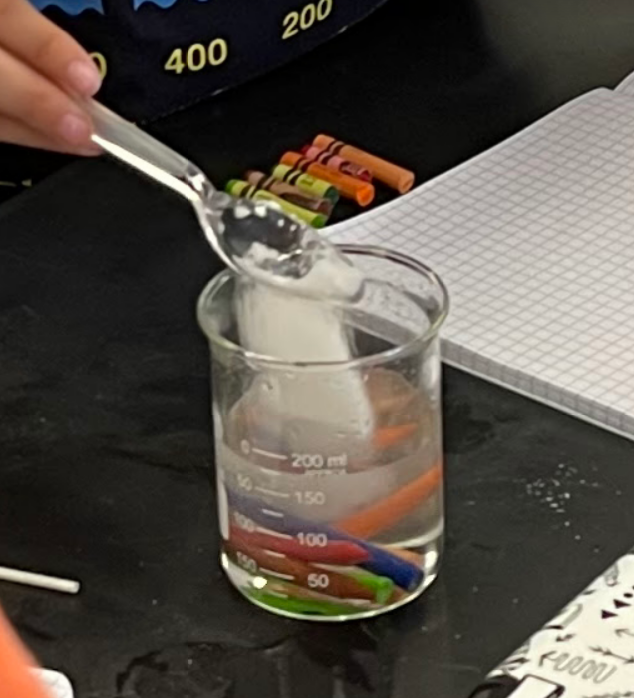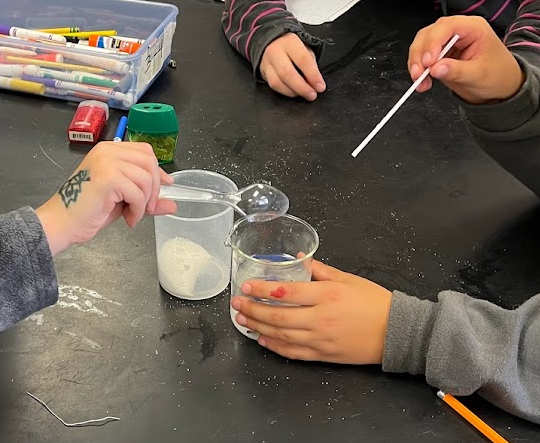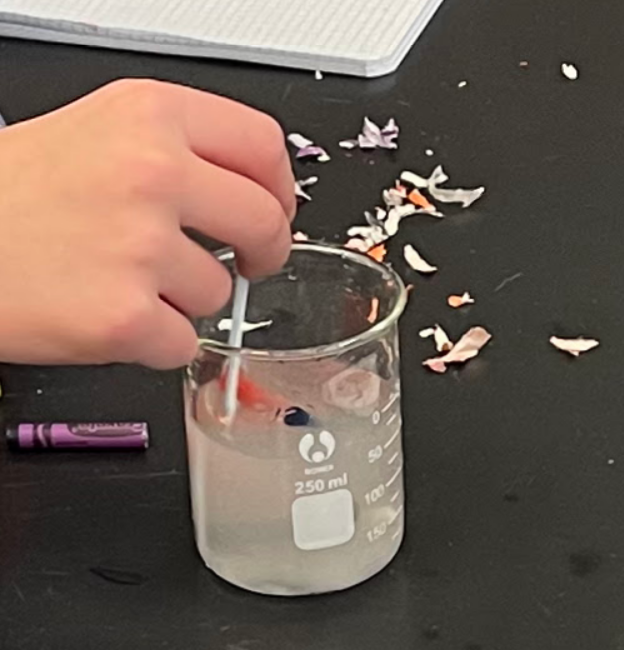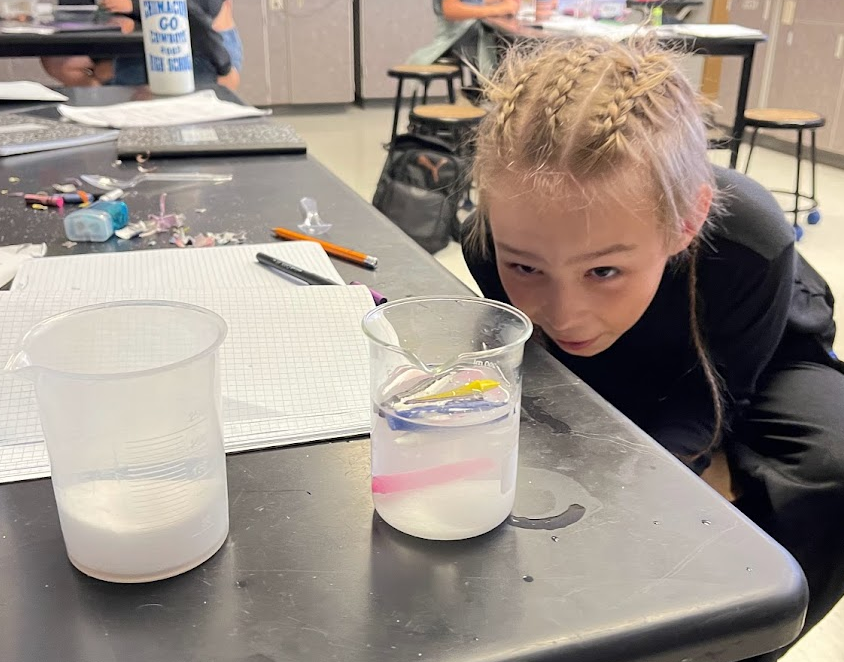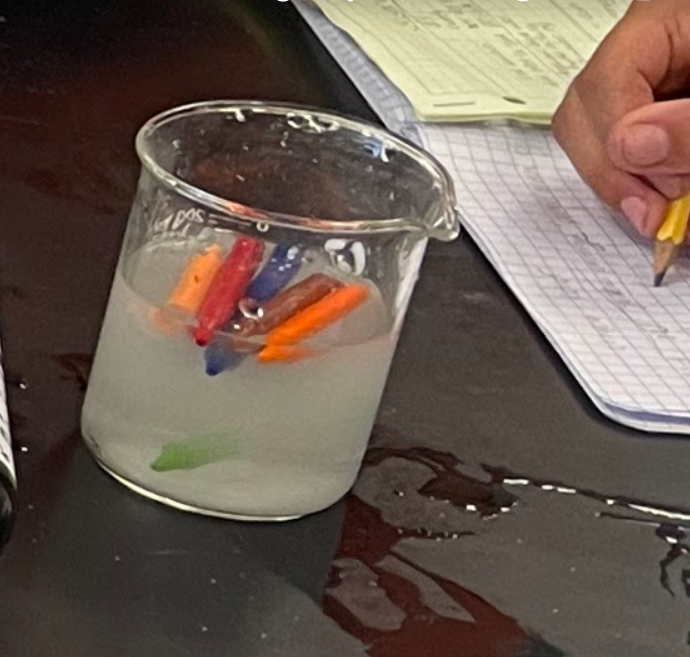Another great activity I started this year with only requires beakers, crayons, water, and salt! Spoons help, too. If you Google Floating Crayons you’ll find more ideas, resources, and even YouTube videos. For this activity, Crayola crayons are the best. I don’t normally endorse products but cheaper crayon brands float in fresh water and that just does not work for this activity.
I start this activity with a big clear bowl of water and crayons (make sure to remove the paper first, before doing the demo). I ask kids what crayons are made of and they come up with wax. Then I ask if wax floats on water or sinks and depending on the kids’ age, we can even get into density, especially later on.
Usually the majority of kids or at least the consensus is that crayons will float. So it comes as a surprise to see that crayon after crayon sinks right to the bottom. Then I take some salt and start adding salt asking the kids what they think will happen. Maybe some will think of the beach and difference between fresh water and salt water and after adding enough salt students see that some crayons float!
At this point, they are hooked. I have students write down questions that come to mind. Kids start to wonder why crayons sink in fresh water then float in salt water. They notice that only some of the crayons floated and I stop adding salt because I want them to conduct their own experiments to see in what order the different crayon colors will float.
This activity has a lot of opportunities for cool explorations and the Crayola website has some information on the different color pigments. Taking the paper off of the crayons takes time so be prepared for kids to spend part of their lab time taking the paper off their crayons. If you have multiple classes, only the first class has to take the paper off. Have plenty of salt – I used 250 ml beakers because the more water they have, the more salt you will need. Crayons will need to be broken in half.
For the basic experiment the manipulated or independent variable is the amount of salt, we just used spoonfuls because one spoonful was just about one teaspoon.
The responding or dependent variable was the order in which the crayons floated. Here’s a pdf for this activity that I found online.
You can just introduce the concept of density or for older kids, this could be a good jumping board to more experiences with density.



